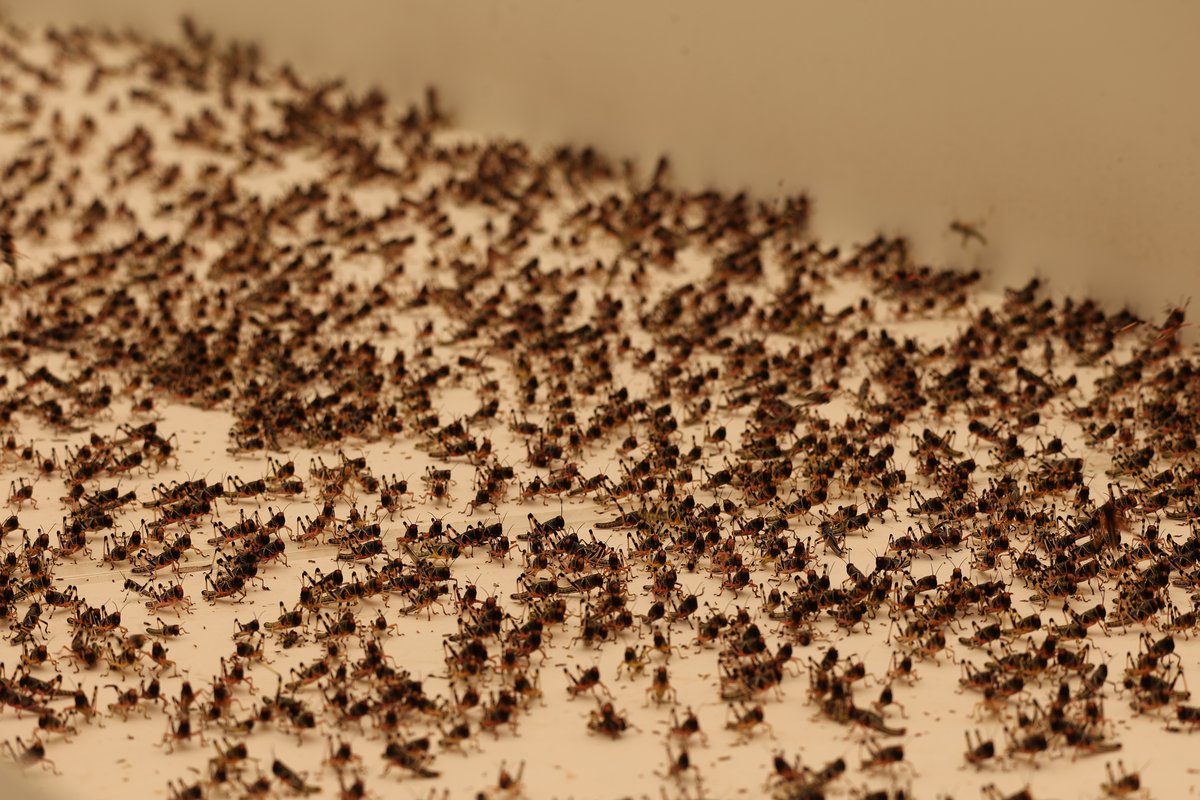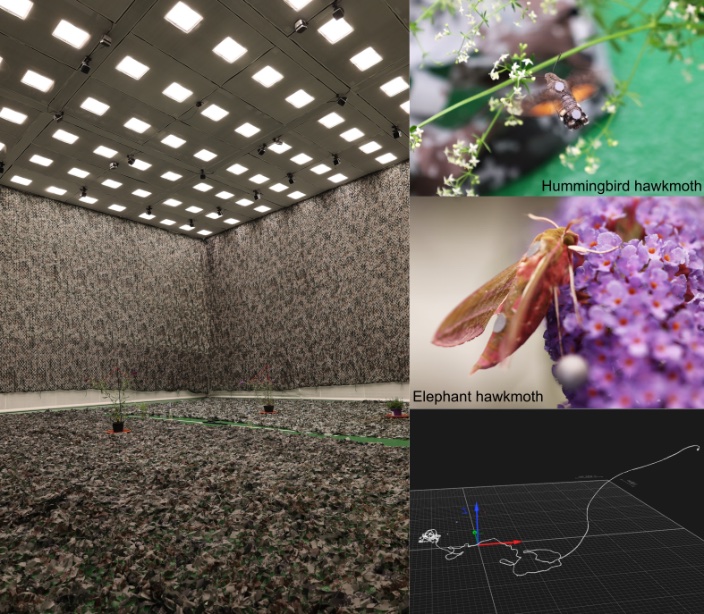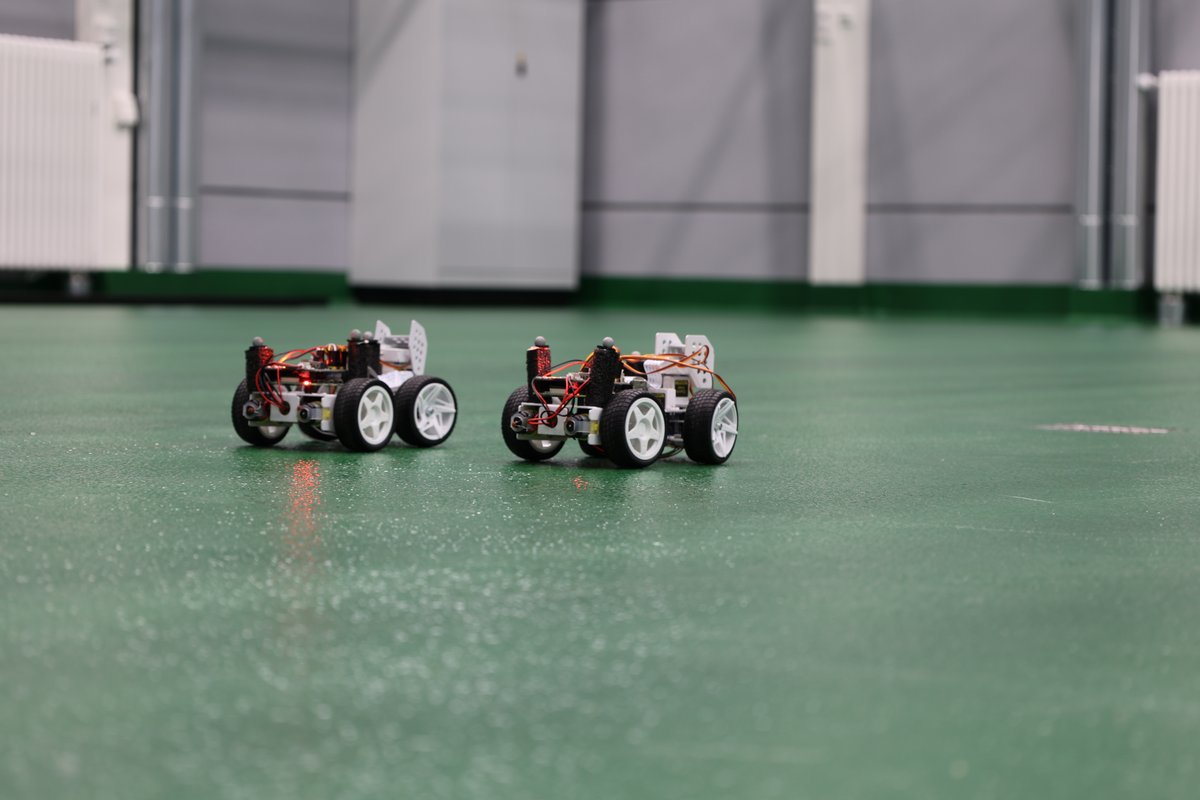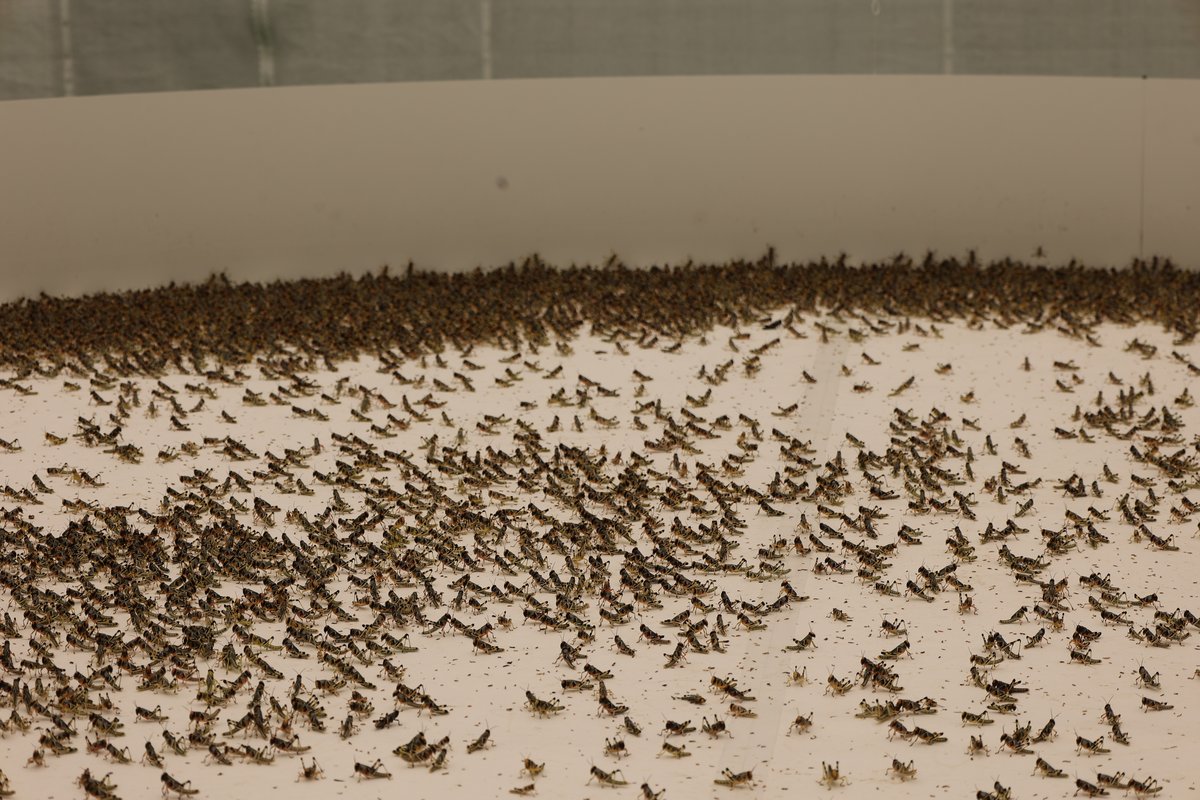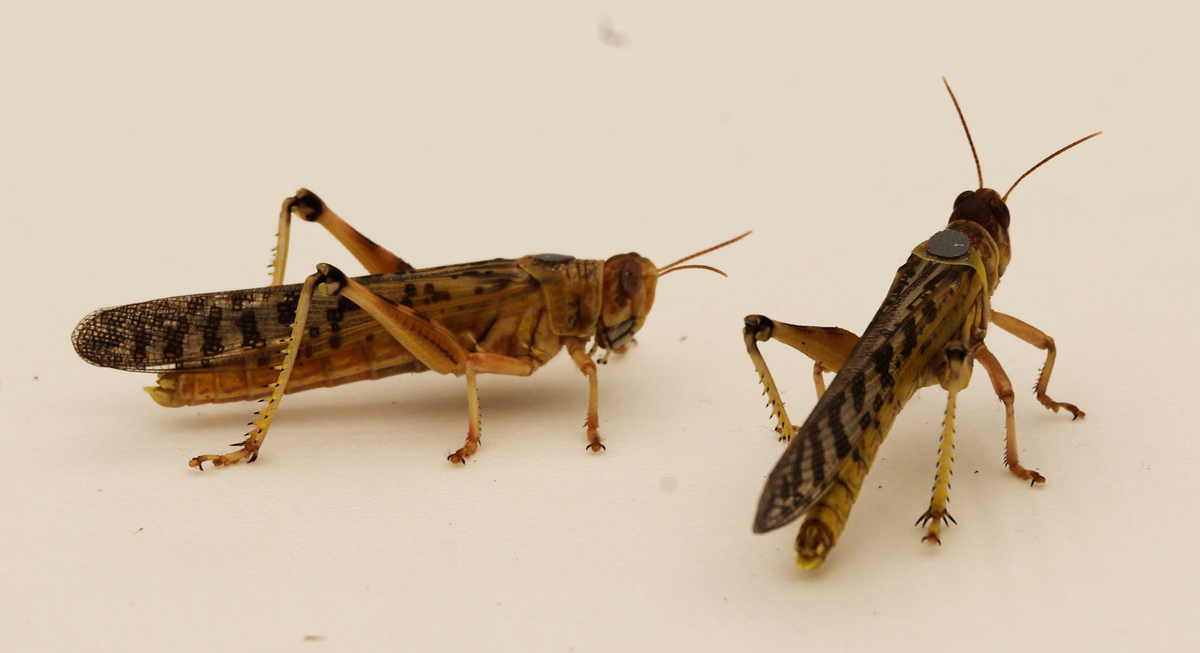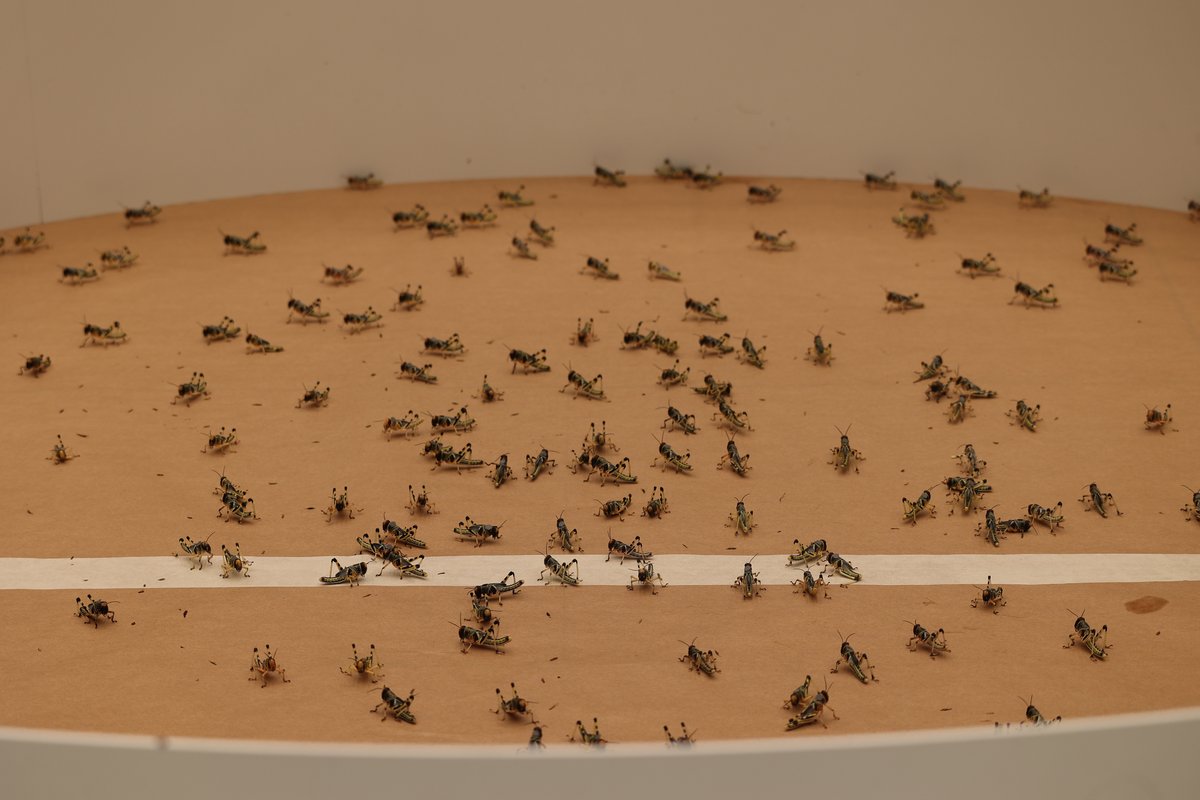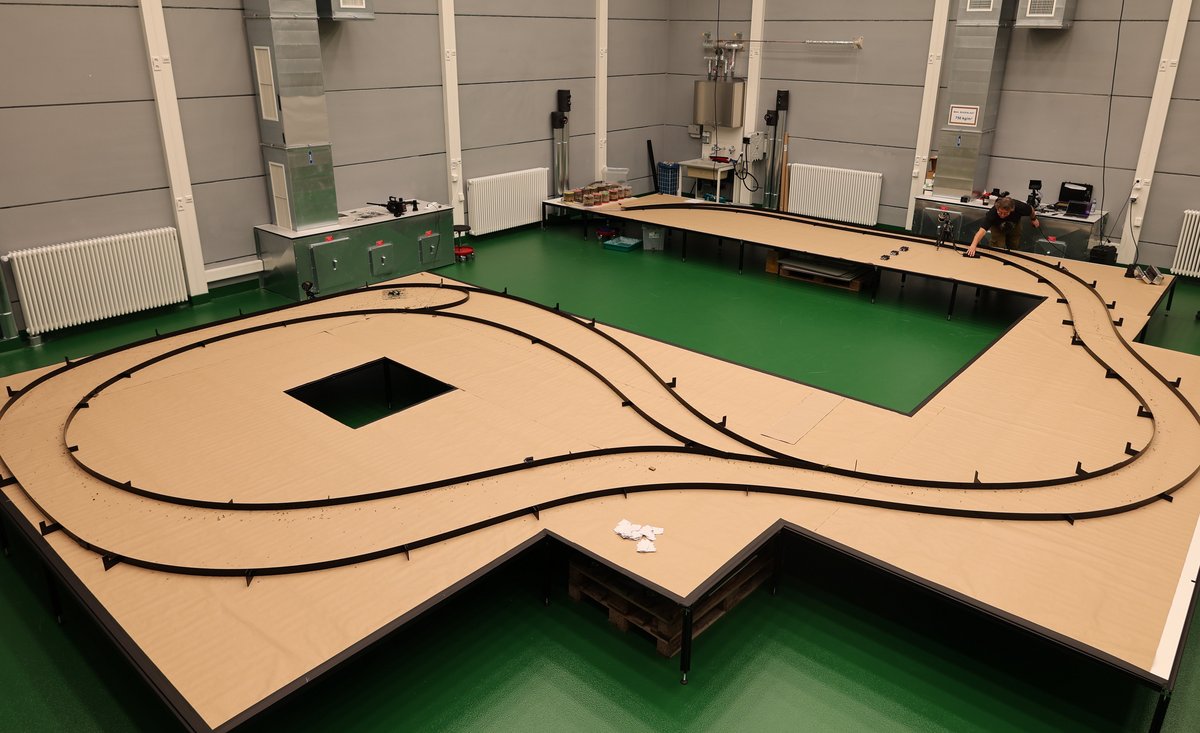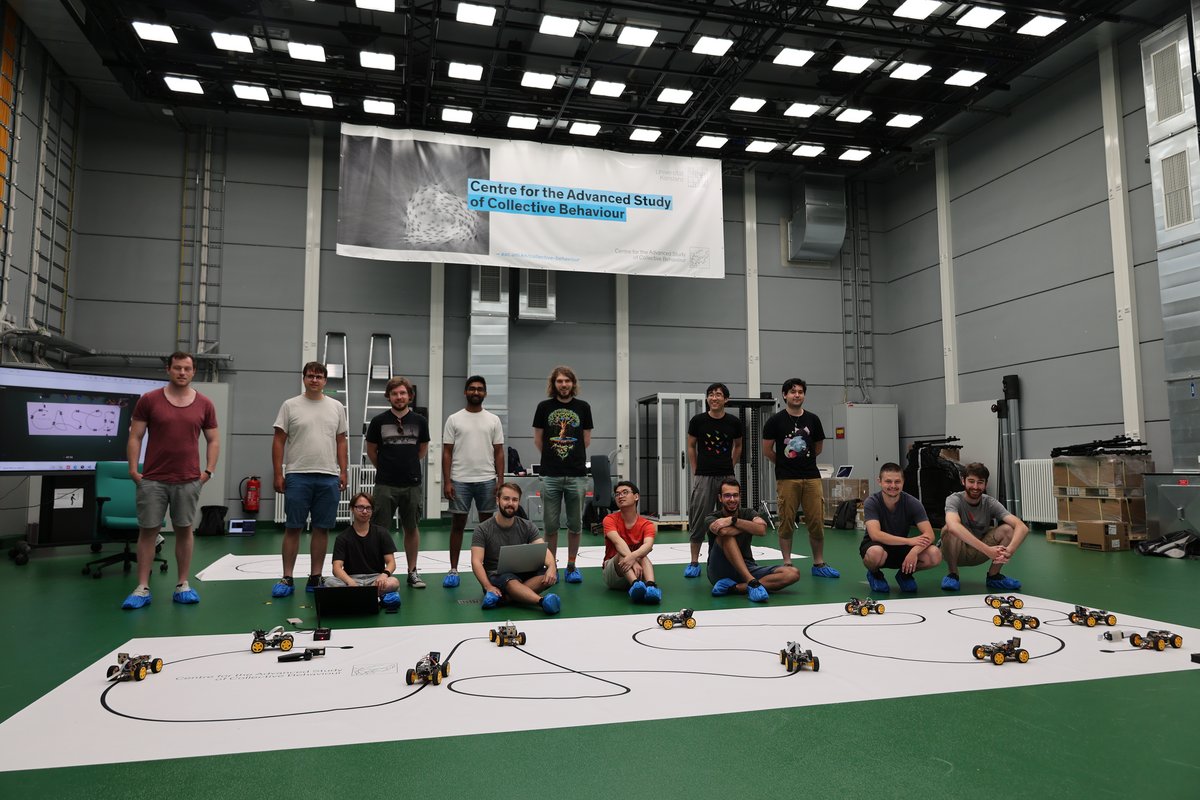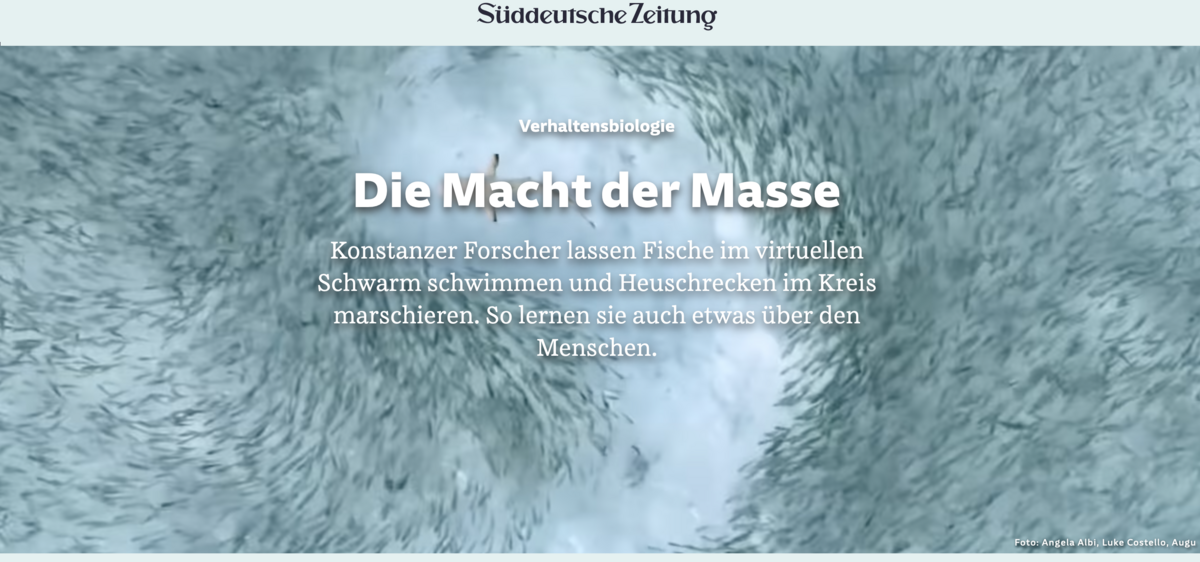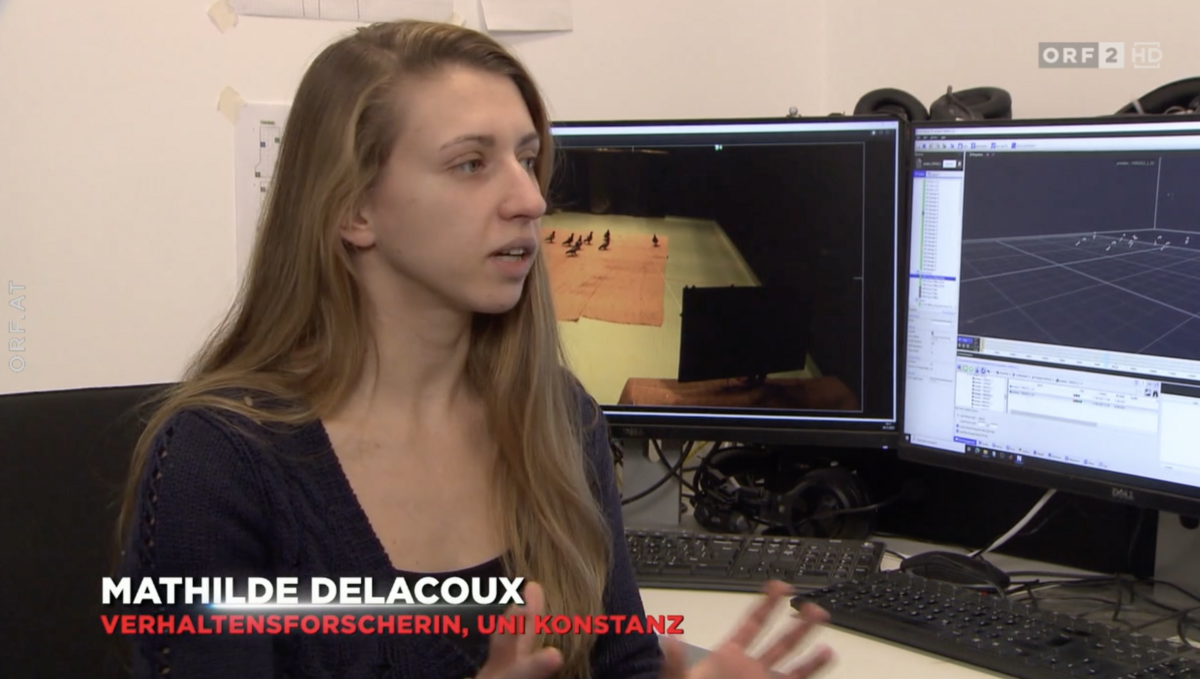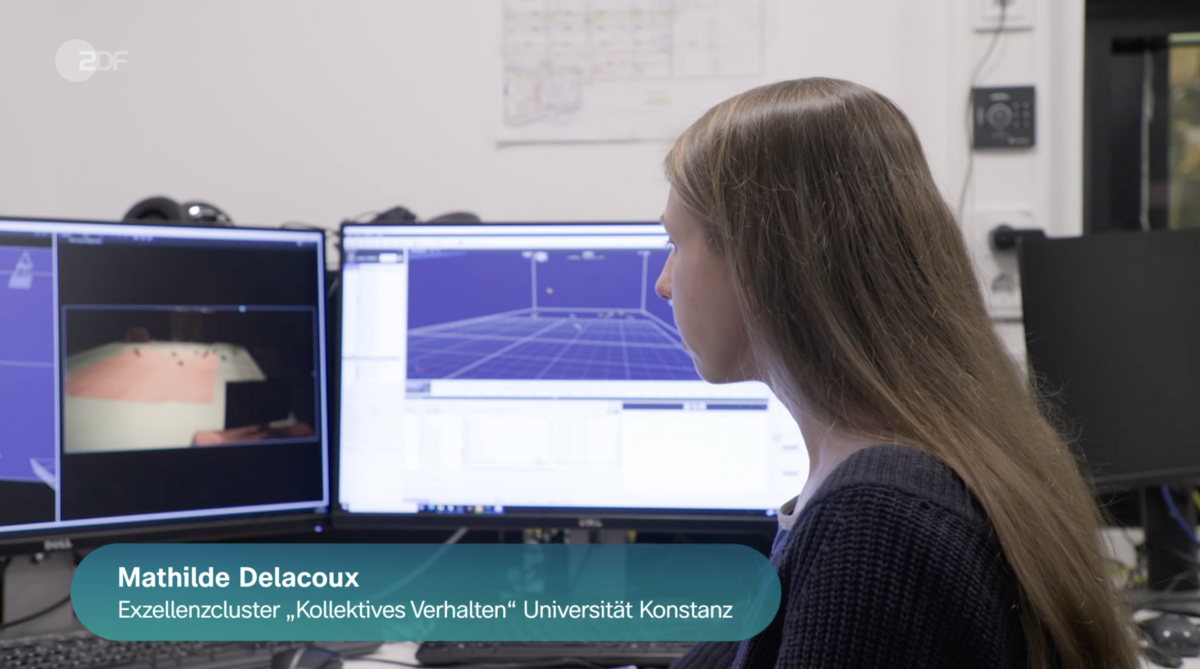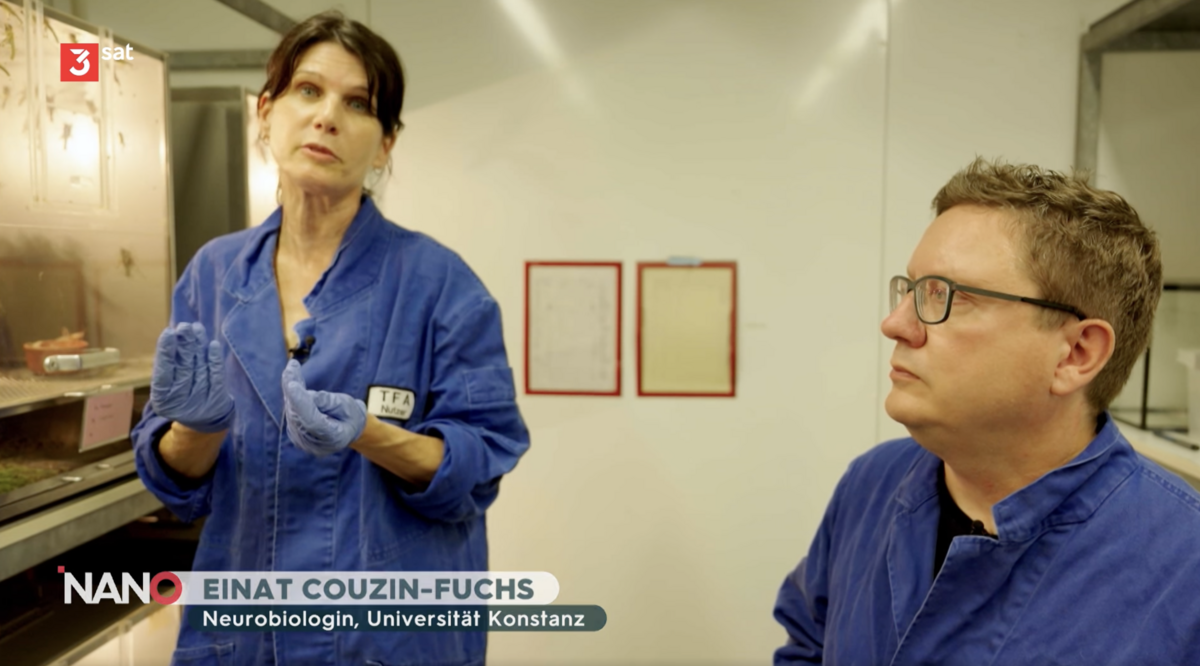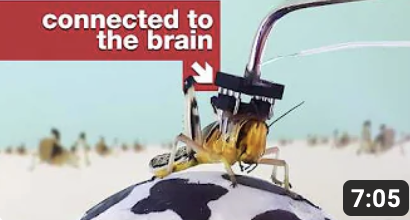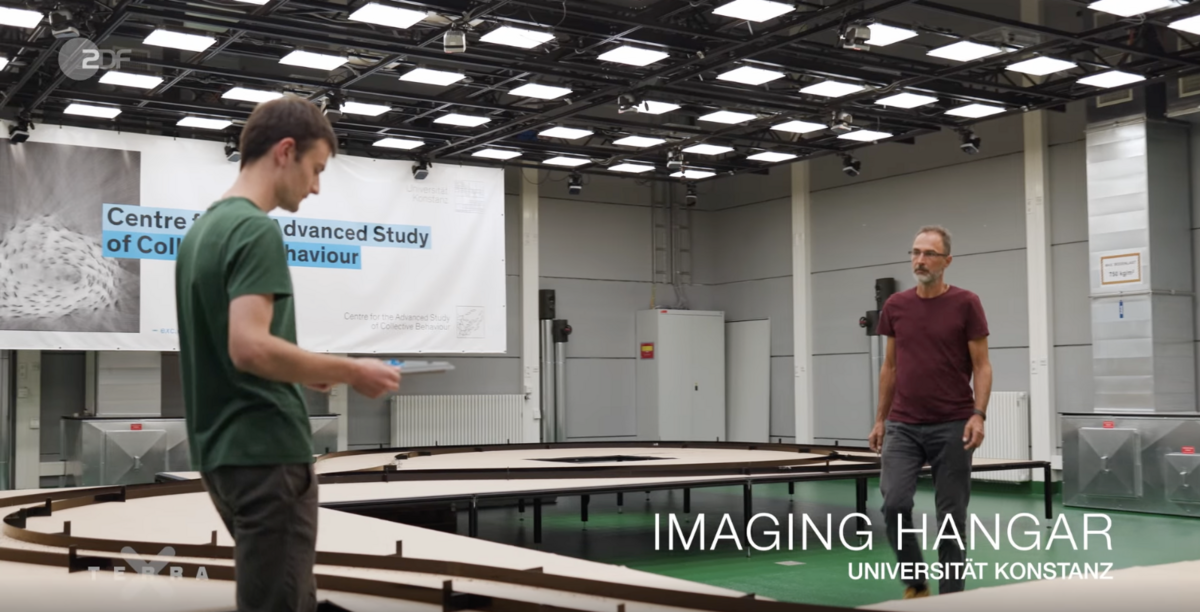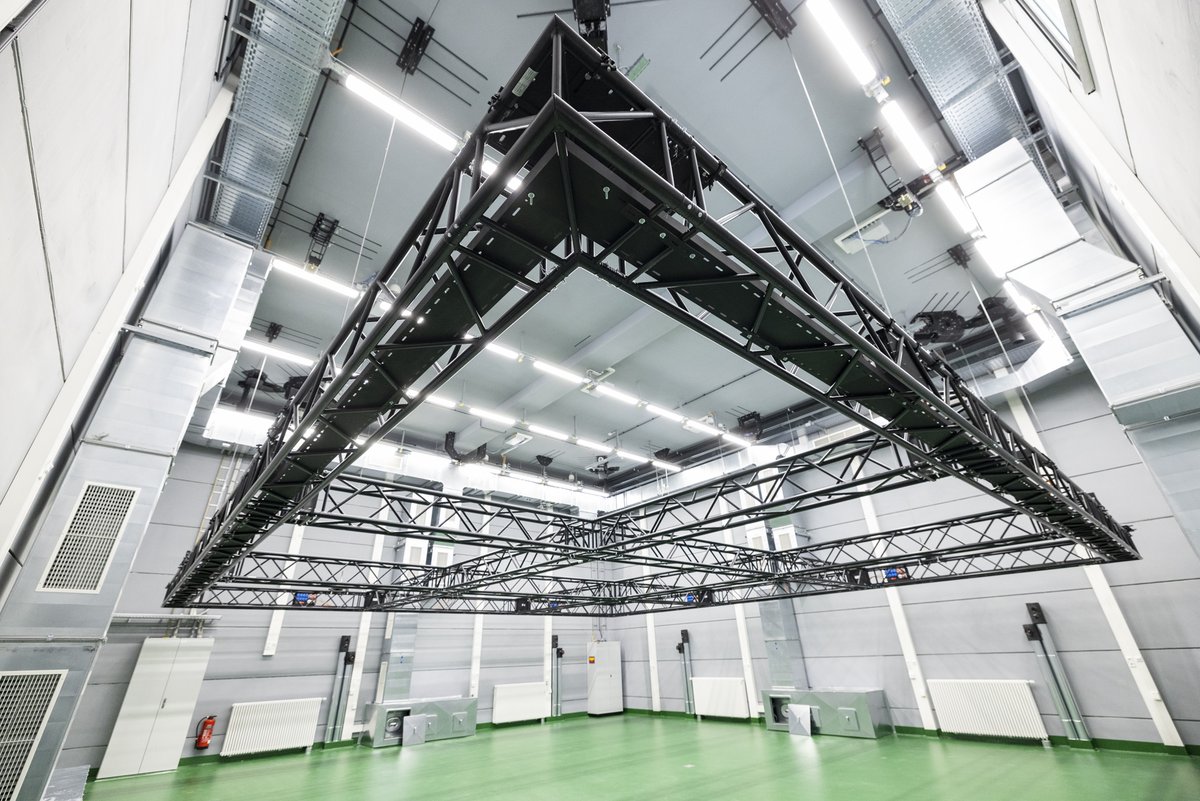
Imaging Hangar in the VCC
What is the Imaging Hangar?
The Imaging Hangar is a core facility of the Cluster of Excellence Centre for the Advanced Study of Collective Behaviour. This state-of-the-art motion capture area is designed for the study of swarms of insects, small birds and mammals, humans, and robotic collectives. The facility consists of 1,900 observable cubic meters and is an adaptive space that can be used for a variety of projects. The initial idea arose in 2015 and the first experiments were conducted in 2022.
360° tour through the Imaging Hangar
Click on the picture below or use this link and explore the Imaging Hangar. While clicking on the blue dots, you can read more about the experiment.
Techniques
The Imaging Hangar is equipped with the latest motion capture and markerless tracking technologies, making it one of the most advanced facilities of its kind in the world. This allows researchers to study the three-dimensional collective behaviour of animals, humans, and robots in unprecedented detail, providing new insights into the dynamics of collective systems.
Experiments
The first experiments with ants and locusts were very promising, and the results have already provided valuable new insights into their behaviours. The biggest project so far was the study of a swarm of 10,000 locusts. The researchers follow the movements, organization, and dynamics of these locusts and aim to understand the foraging behaviour in different food distributions and the communication in the swarm when in danger. The experiment should also help to unravel the reasons for locust’s plagues, also known as one of the biblical plagues.
Experiments in the Imaging Hangar
How to conduct an experiment in the Imaging Hangar
If you are interested in applying for an experimental time in the Imaging Hangar or similar facilities, please fill in the Imaging Facility Proposal. The Imaging Hangar is open to researchers from around the world, and the CASCB is looking forward to welcoming new scientists to the facility.
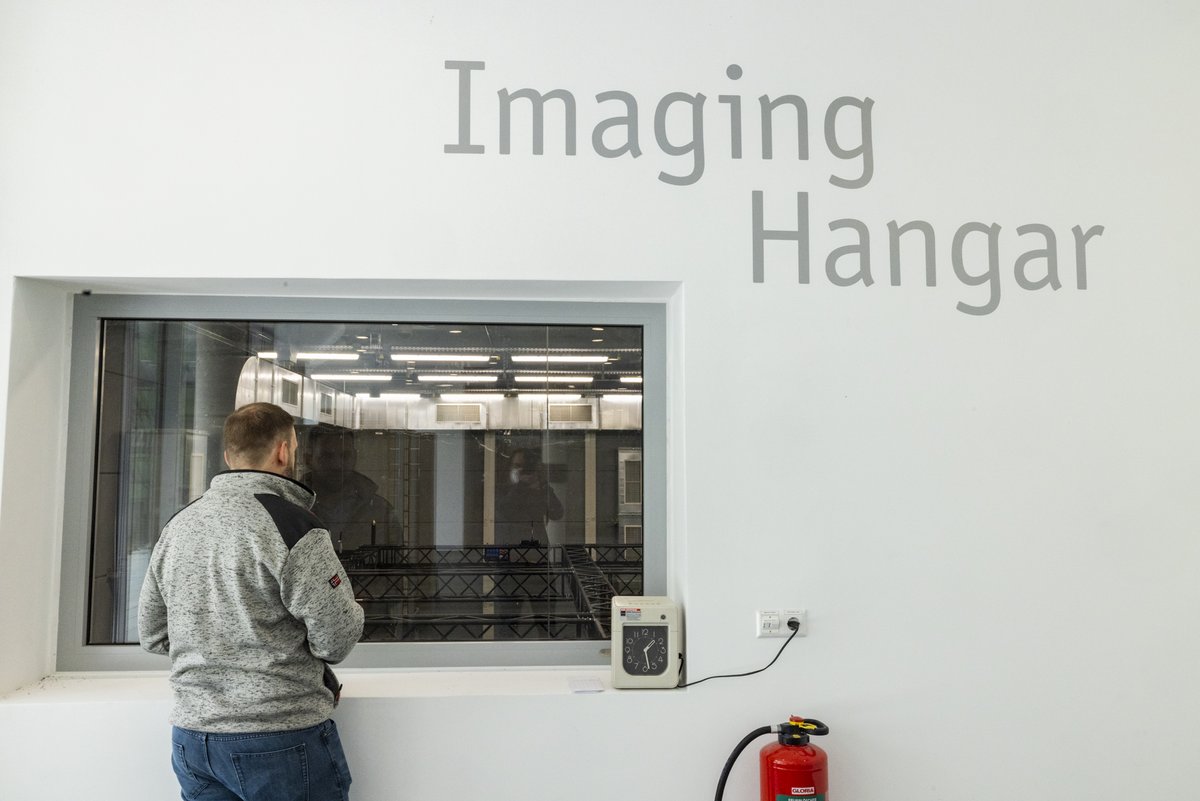
Visiting the Imaging Hangar
In January 2023 the Minister-President of Baden-Württemberg visited the facility to see its innovative technologies and capabilities. He was thoroughly impressed by the use of the Imaging Hangar to study not only animal collectives but also human and robotic collectives, which opens up a whole new realm of research possibilities.
We would like to invite the public to experience the Imaging Hangar as well. Come and take a look through the Imaging Hangar window, located in ZT 7. We also open our doors on special occasions – but swarm experiments have priority.
Overall, the Imaging Hangar is a cutting-edge facility that promises to revolutionize our understanding of collective behaviour. With its advanced technology, flexible design, and expert team of researchers, the Imaging Hangar is sure to make a significant impact on the field of swarm research, for animals, humans, and robots alike.

Imaging Hangar technician
For more information on the Imaging Hangar, or to inquire about research there, please contact Mathias Guenther


